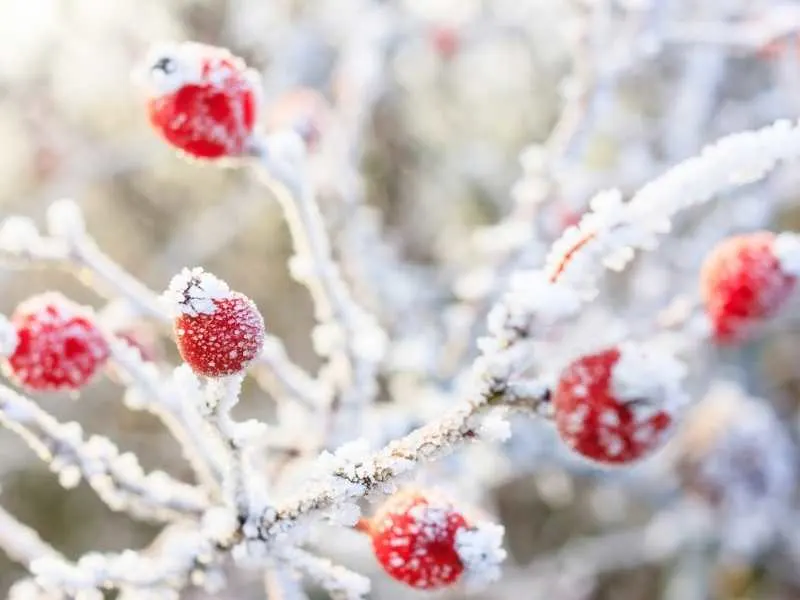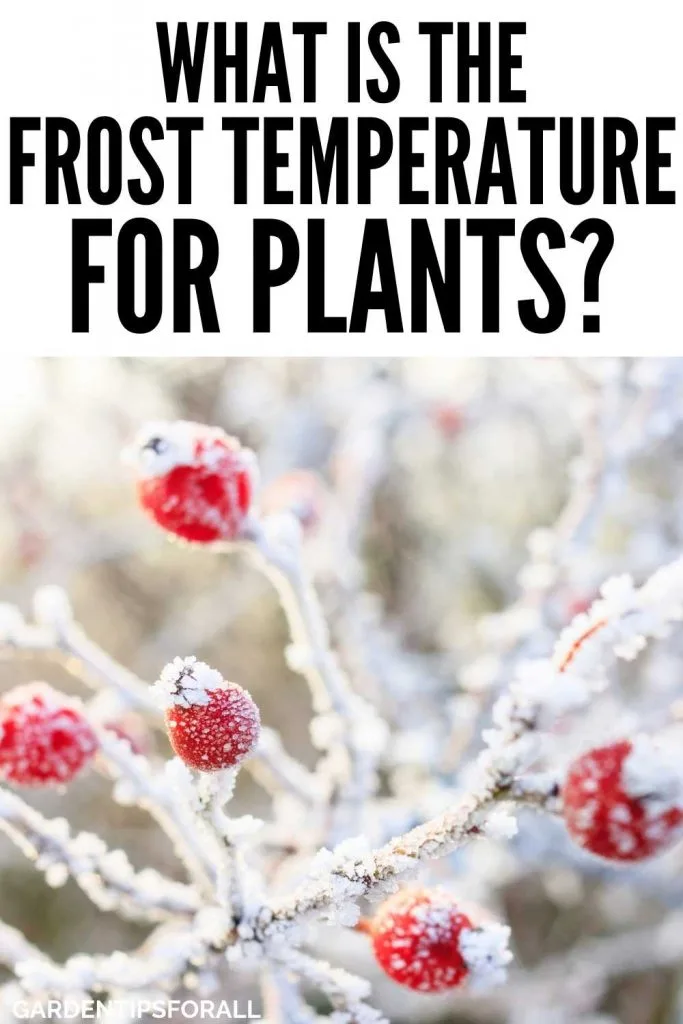At What Temperature Do Plants Start Freezing?
The presence of frost on plants is a big scare to the gardeners and farmers. Knowing the frost temperature for plants can help you protect your plants from freezing temperatures and frost damage. That is why a lot of people are asking, what is the frost temperature for plants?
If you are one of those people, then you are at the right place.
Keep reading to find out at what temperature plants start freezing and how to protect your plants from frost damage.

Related Article:
What is the Frost Temperature for Plants?
Frost occurs on plants at a temperature of 32 degrees. Sometimes, it can occur at a temperature below or slightly above 32 degrees. There are two types of freezing temperatures, and they are:
- Hard Frost – It is also known as hard freeze, and it takes place when the temperature is below 28 degrees for a long period of time. At this level, most plants will be damaged, and nothing can be done about it.
- Light Frost – Light freeze occurs at 32 degrees temperature or slightly below for a night or few hours. In such temperatures, only the tough plants will withstand the cold and survive.
Factors that Can Prevent Frost on Plants
Most of the factors that prevent the occurrence of frost on plants are weather-related. Here are some of them.
Moisture
This is a great factor when it comes to frost prevention. There is a release of high heat levels whenever moisture is condensed from humid air. The released heat is a great savior to plants.
On the other hand, moisture evaporates from the soil every time the air becomes dry. For evaporation to occur, there must be heat, and it is the one that keeps off the frost.
Wind
The wind is another great savior of plants from frost. When air is not moving, it causes cold air to settle around the ground, causing the plant temperature to go down, leading to frost formation.
On the contrary, if the air is in motion, it will hinder the settlement of cold air near the ground, thus protecting your plants since the temperatures will be high.
Location
This is another factor that significantly influences the occurrence of frost.
It is said, the higher you go, the cooler it becomes. This means that if your garden is high, it will attract more cold, and there will be a higher chance of your plants being attacked by light or hard frost.
How to Prevent Formation of Frost on Plants
Here are some of the ways to prevent frost from forming on your plants.
Proper Watering
When your plants are adequately watered, the soil can hold moisture for a long time. The moisture will then evaporate to the top surface and warm the plant’s surroundings.
Therefore, it is wise to give your plants enough water when the cold weather approaches.
Move the Plants
If possible, you can move the plants that are more susceptible to a garage or any other warm place. This may only apply to potted plants.
Use Blankets (Plant Covers)
You can also use blankets to save your plants from frost damage. The blanket or plant cover comes in handy for the tender plants by insulating them when it’s frost time. You can use hoops as pillars for holding the blanket over the plants.
After that, ensure you drape it to the ground. You should only do this at night and remove the blanket in the morning.
If you fail to remove the blanket, some condensation will occur under it, resulting in a freeze that might damage your crops.
Use a Fan
If your plants are indoors, you can enhance air circulation using a fan. As mentioned earlier, if the air is stationary, it increases the chances of the plants freezing.
Mulch the Plants
Mulching is an excellent tip when it comes to the prevention of crop damage by frost. After a warm season, mulch the plants so as to retain heat.
Mulch acts as an insulator, preventing heat loss. But be careful not to mulch when it’s too cold since this will also retain the cold in the roots, causing damage.
Use Artificial Heating
If possible, you can install fluorescent or incandescent bulbs to provide extra heating to the plants. Make sure they are at least 3 feet from the plants for them to be effective.
Change the Planting and Harvesting Schedule
Sometimes, the best way to avoid frost is to change the planting schedule so that their growing season doesn’t coincide with the frost season. The same case applies to harvesting.
If your plants are almost ready, and frost season is coming, you can harvest them early, especially if they can ripen after harvesting. Apples, plums, and tomatoes are good examples of plants you can harvest early.
Frost dates vary, so make sure you consult your local Weather Forecasting service.
Conclusion
The weather can be unpredictable at times, and this might affect your crops negatively. When frost occurs, your plants may be damaged, and you will suffer loss. However, with the information shared here, you know the frost temperatures for plants and, most importantly, what you can do to protect them.


deano
Saturday 15th of October 2022
my grand father and grand mother used torches 6 of them on a 25 by 40 foot garden it would work to keep the frost away